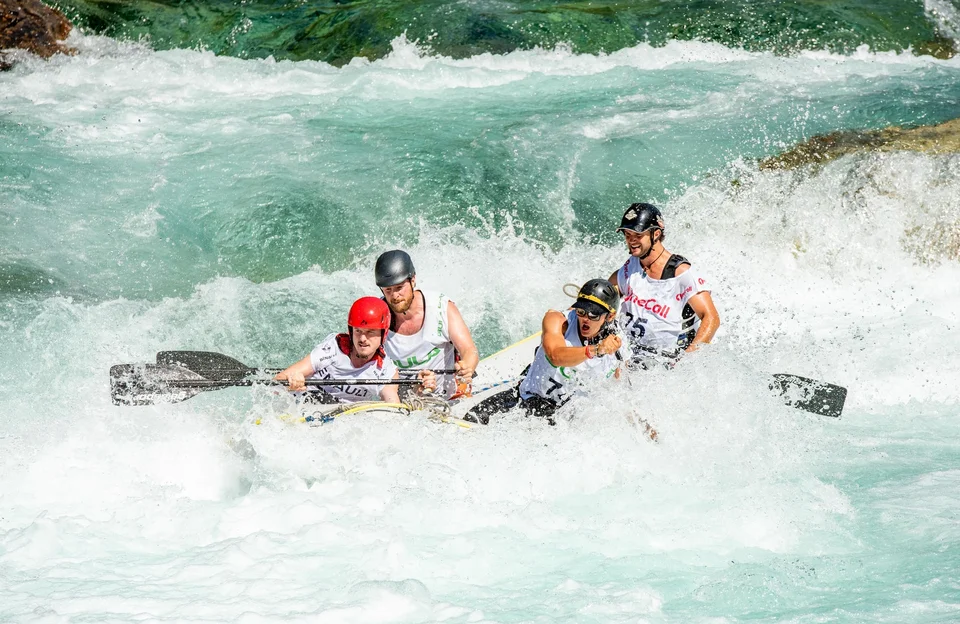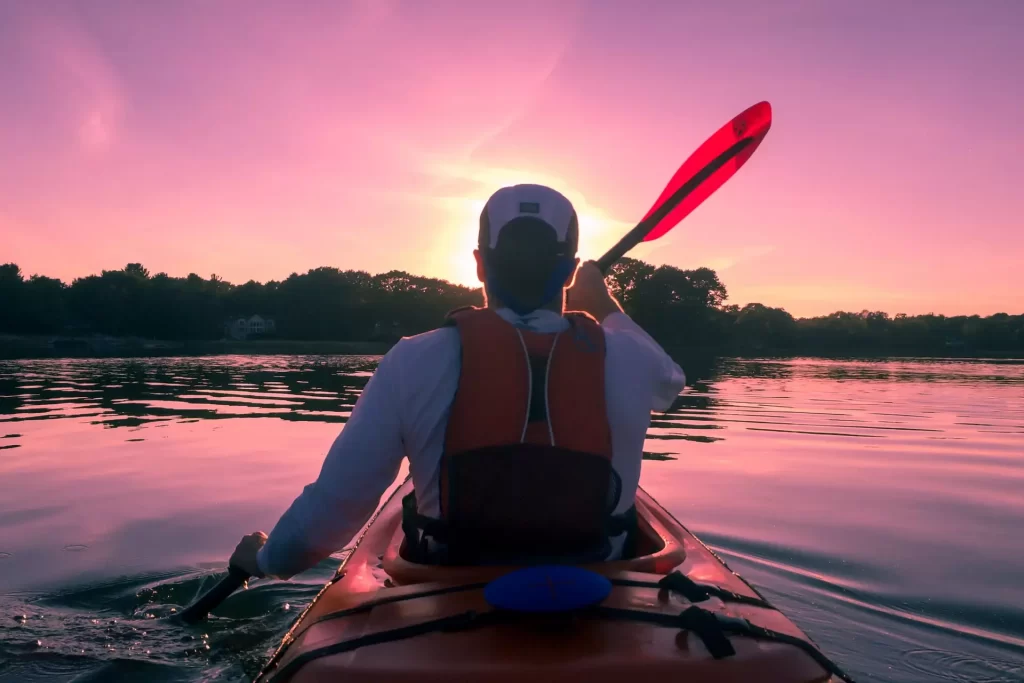Generally speaking, kayaking is not hard until you face some of the following factors. Most of cases it is very easy to do. Anyone can do it with any level of skill.
But sometimes this easy thing can be hard for some specific conditions. However, the question “is kayaking hard” is better answered by the question “why is kayaking hard”.
In this article we will explore why kayaking might be hard for beginners and what the different reasons for this might be, taking it on a case-by-case basis.
So, these are the factors that could make kayaking hard for you:
- Safety
- Balancing
- Improper clothing
- Inefficient way of paddling
- Size of a kayak
- Type of kayak
- Skill level
- Weather condition
- Physical condition
Let’s learn how these factors impact kayaking. Here we will learn what you should do and what shouldn’t.
Table of Contents
1. Safety
Safety is a critical aspect of any activity, and it’s essential to adhere to safety guidelines at every stage of any task. That’s why it is time to remember the quote “Safety first work last!”.
So, whether you’re a novice or an experienced kayaker, it’s imperative to follow safety protocols. Experienced kayakers often find it easier to do so because they have likely honed their skills through extensive practice.
However, being human, we can sometimes make poor decisions. Some of us might venture out for a paddle while under the influence or skip wearing a safety jacket, among other risky behaviors. This can lead to accidents and hazards.
These instances serve as reminders for all of us, regardless of our skill level. Before embarking on a kayaking trip, it’s crucial to familiarize ourselves with the fundamentals of kayaking and safety.
Once you’ve mastered the safety rules, you’ll have the confidence to enjoy kayaking safely, which is always a positive outcome.
2. Keeping balance
Balancing is important, especially on water. Since kayaks are made in a narrow shape, without proper balancing you may get tipped. If one gets tipped due to balancing issues, it will dangerous or hard for a beginner to come back.
So before going to paddling learn some basics of paddling, how to recover from a tipped position. If anyone practices it by the instructions of an instructor or pro kayakers, this will not be an issue for kayaking.
Another important thing to know is that you have to follow the instructions provided by the kayak manufacturer. Be careful about the capacity of your kayak.
Don’t get to the maximum capacity of your kayak. Always keep you and your stuff weight a few pounds less than maximum weight capacity.
There is also an issue of stability of different types of kayaks. Some of the kayaks are sit-in types, some are sit-on-top types. The stability of sit-in kayaks is better than sit-on-top kayaks. So, if you want to paddle in calm and flat water then a sit-on-top kayak will be best for you.
3. Proper clothing
Kayaking is a versatile activity suitable for both winter and summer seasons. It’s a common misconception that kayaking becomes challenging during the winter months when the cold weather prevails.
This perception often dissuades people from paddling in colder conditions, contributing to the belief that winter kayaking is demanding.
While it’s true that winter kayaking comes with its unique set of challenges, anyone can enjoy this experience by taking appropriate precautions and wearing the right gear to stay warm and safe on the icy waters.
To venture into winter kayaking successfully, it’s essential to prioritize safety and comfort. Specialized clothing and gear are key components of this endeavor. Consider using water-resistant hand gloves that won’t absorb moisture, as well as footwear designed for water sports.
Keep yourself well-insulated by securing your jacket tightly around your throat area to minimize exposure to the cold. These measures will help ensure a comfortable and enjoyable winter kayaking adventure.
4. Learn efficient ways of paddling
Many beginners think that kayaking is not a tough thing. Just take your paddle and hit the water that’s it! But the reality is a bit different. Yes! you can do it.
But you may face hurdles in propelling your kayak after a few minutes of paddling. So, learn efficient paddling technics. Do some practice before the long tour. I swear, it is very easy to learn.
5. Size of a kayak
Size matters! If you are tall enough and you choose a small kayak that may not be perfect for you. You may not feel comfortable kayaking. Or if you choose a kayak long enough for your kids that going to be hard for them to propel it.
So, choose a long kayak if you are tall enough, and small kayaks for a short kayaker. Here is a question arises, what should be the size of a kayak for a specific height of kayakers?
Height Of The Kayaker | Length Of The Kayak |
|---|---|
Less than 5 ft. | 210 cm. to 230 cm. |
5 to 5.5 ft. | 210 cm. to 240 cm. |
5.5 to 6 ft. | 220 cm. to 240 cm. |
Above 6 ft. | 220 cm. to 250 cm. |
So, from our research, we found that if a kayaker is less than 5 feet then he should choose a kayak of 200 cm to 230 cm long. For a 5 to 5.5 feet kayaker, a 210 cm to 240 cm long kayak will be good.
For 5.5 to 6 feet kayaker 220 cm to 240cm kayak will be fine. Above 6 feet kayakers, it is recommended to get a kayak that is 220 cm to 250 cm long.
6. Type of kayak
Kayak selection is important for easy kayaking. There are different types of kayaks for different purposes. Fishing kayaks for fishing, White water kayaks for exploring new places with heavy current and running water, and touring kayaks for long travel and quick movement.
They are different in design for specific purposes. So, if you choose a fishing kayak for touring purposes then kayaking will be hard for you.
And if you choose a kayak for fishing that is made for touring, you will not be able to attach many of your fishing gear to it. So choose a kayak according to your purpose.
7. Skill level
If you are a beginner, you should do kayaking on flat and calm water like ponds, lakes, etc. Running water with a heavy flow may wipe you out. You may lose control and can fall into hazards.
8. Weather condition
Before going to enjoy kayaking you should check the weather conditions in that area. See the weather forecast. Because windy or stormy conditions can through you in an unwanted condition.
9. Risk level
Consider the risk level of the location you selected. Kayaking can be hard in some risky areas. Special in the mouth of a dam where water pull is very high. Such type of location can be hazardous for any kayakers.
10. Physical condition
Kayaking requires a good amount of energy to propel your kayak. If you think that you have weaknesses, I think you should give a thought before paddling on current. Kayaking might be hard for you in that condition.
Anyone beginner, old, or weak person should avoid conditions like heavy current, windy site, wacky river. Rather choosing calm and flat water like lakes or ponds will be a great idea for them.
You just have to respect the instructions from your instructor and pay close attention to the signs in the river or on the water. Learn some water sport safety.
So, all the above factors will not be an obstacle to your safe kayaking. Thanks for reading this article. I hope you got your answer to the question “is kayaking hard?” If you got what you are looking for, please let us know by commenting below.



Pingback: 10 best places to kayak in the US - Safekayaking